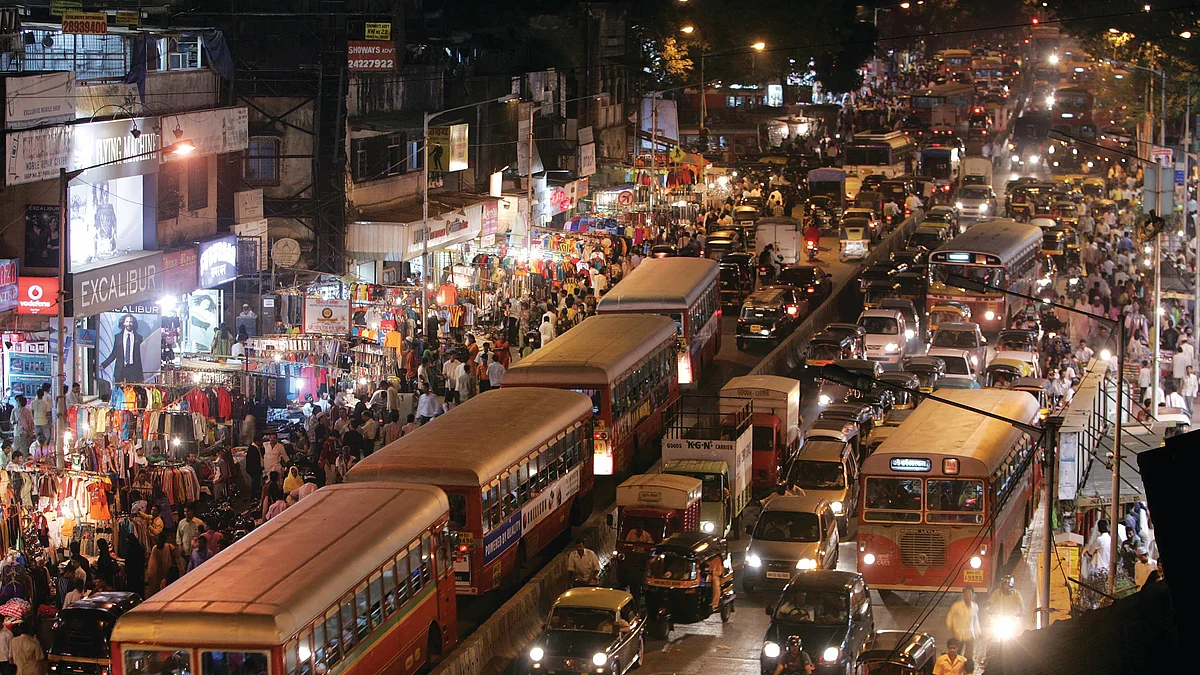Gazing into a Mumbaikar’s invisible and private life
In Mumbai parties, what defined people was the question, “Where do you live?”. Chandrima Pal, in her ‘At Home in Mumbai’, cuts across the metropolis to write about people

At Mumbai parties, there was that one question that defined who you were. At Delhi parties the question is usually, “What do you do?” but in Mumbai, that teeming metropolis with every inch of space fought over, what everyone asked you was, “Where do you live?” And we divided ourselves by area—I only hung out with my friends from Bandra (this was when it was still expensive but not prohibitively so), I even remember saying, “I can’t date anyone who lives more than five kilometres away from me.” I wasn’t being snobby—it was just a factor of time. If you spend most of your dating life in an auto rickshaw pushing through traffic to see the one you love, how long before it becomes a chore?
Suffice to say, we spent a lot of our time talking about real estate. If it wasn’t “where do you live?” it was “how much rent do you pay?” We tracked apartment listings like some people look at pornography. We envied our friends who still lived with their parents and didn’t have to spend all their money on rent. The city in our eyes was broken down into zones and it was very rare that where you wanted to live and how much money you could afford to spend intersected.
At Home In Mumbai by Chandrima Pal is a book where the main premise is so staggeringly obvious you wonder why it took so long for someone to write about it. Pal cuts across the city—from the tony South to the new developments in Navi Mumbai and writes about the people who live in these houses with loving detail. Nor is it only just houses—she speaks to a few women who live on the footpath, and in one particularly poignant moment, she realises that even though she’s in her Fab India kurta and sunglasses, just by sitting with her interview subjects on the road, she is as invisible as they are.
Pal is a strong storyteller and some of her essays stand out. The one about a high rise being built in the middle of nowhere for example, where the fancy road that led there became a death trap because of reckless driving. The one where a man searches for a home for his autistic child, but turns into a story about loneliness and despair. Of course, some stories are stronger than others, and bits of Pal’s prose could have been toned down from effusiveness, especially when she adds a gushing adjective in the middle of a sentence: “her beautiful reflection,” “his beautiful name” and so on and so forth. However, she does manage to put herself as the writer in the background very effectively, so there’s not a lot of “I thought” and “I felt” which would have brought this book down. Instead, there’s a feeling of voyeurism in the best sense, like we’re in the houses, and looking at these people as though we’re the flies on the wall. No judgement. No walls, ironically for a book about houses, between the reader and the people we’re reading about.
There were times when I lived in Mumbai when I’d be going past an apartment building and all the lights were on in each flat, and the curtains were open, if there were curtains at all and you could see glimpses of people going about their evenings. I always looked—drawn to a world on display and yet intensely private. That’s what reading this book is like, the same sensation of gazing into another life.
Follow us on: Facebook, Twitter, Google News, Instagram
Join our official telegram channel (@nationalherald) and stay updated with the latest headlines
